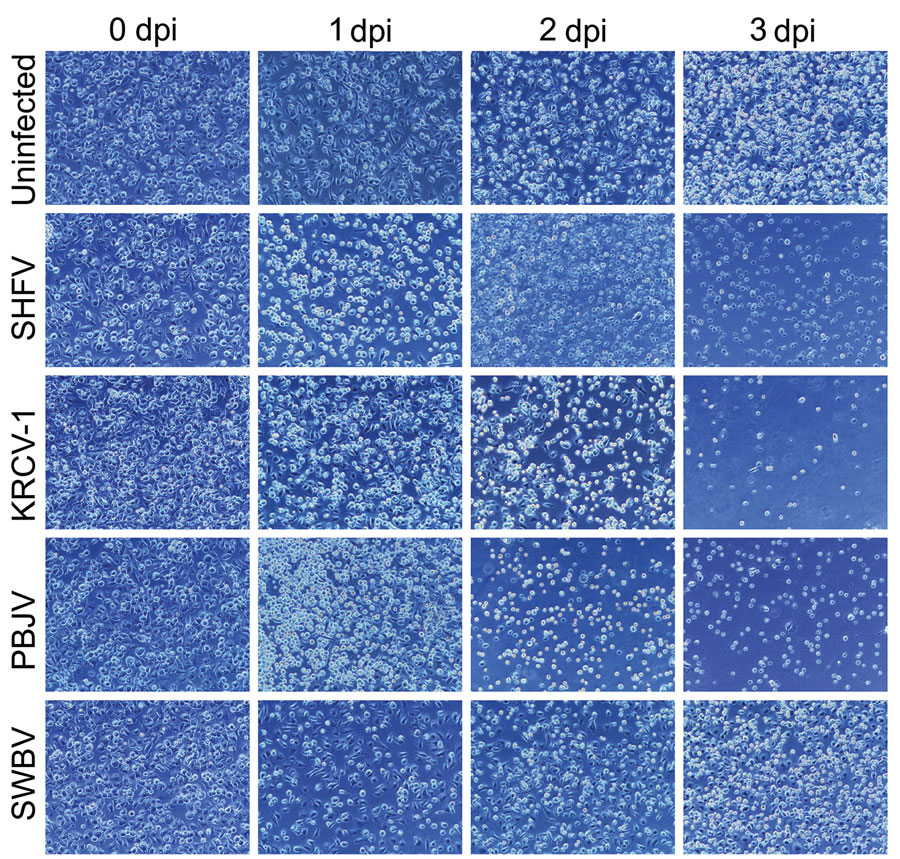Volume 30, Number 4—April 2024
Research
Isolation of Diverse Simian Arteriviruses Causing Hemorrhagic Disease
Figure 7

Figure 7. Cytopathic effect after infection of induced pluripotent stem cell–derived macrophages in study of diverse simarteriviruses causing hemorrhagic disease. Induced pluripotent stem cells from crab-eating macaques were differentiated into macrophages and mock infected (uninfected) or infected with different simarteriviruses. Cytopathic effect was monitored for 0–3 dpi. Original magnification ×100. dpi, days after inoculation; KRCV-1, Kibale red colobus monkey virus 1; PBJV, Pebjah virus; SHFV, simian hemorrhagic fever virus; SWBV-1, Southwest baboon virus 1.
Page created: February 15, 2024
Page updated: March 20, 2024
Page reviewed: March 20, 2024
The conclusions, findings, and opinions expressed by authors contributing to this journal do not necessarily reflect the official position of the U.S. Department of Health and Human Services, the Public Health Service, the Centers for Disease Control and Prevention, or the authors' affiliated institutions. Use of trade names is for identification only and does not imply endorsement by any of the groups named above.